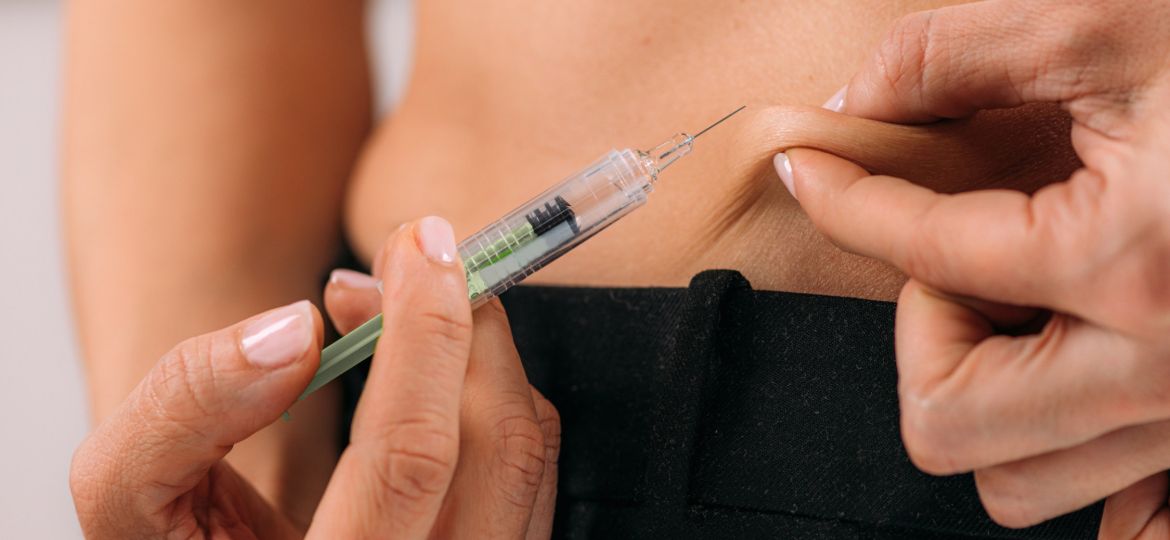Peptide Health

Above Wellness
These short chains of amino acids, often referred to as the building blocks of proteins, play a crucial role in various physiological functions.
What is Rosacea?
Rosacea is a chronic inflammatory skin condition that affects more than 15 million people in the U.S. (about 5% of the population). It is characterized by persistent redness, visible blood vessels, sensitivity, and in some cases, papules, pustules, or thickened skin. Left untreated, it may progress to more severe symptoms, including fibrosis (skin thickening) and eye involvement.
Rosacea is most common in people with fair skin of Caucasian or mixed ethnicity, and it requires consistent, daily management.
⸻
The 4 Subtypes of Rosacea
Rosacea presents in different ways depending on the subtype:
1. Erythematotelangiectatic Rosacea – Redness of the skin with visible blood vessels.
2. Papulopustular Rosacea – Redness, swelling, and acne-like papules and pustules.
3. Phymatous Rosacea – Thickened skin with a bumpy texture, often on the nose.
4. Ocular Rosacea – Eye involvement with redness, irritation, swelling of eyelids, and dryness.
⸻
What Causes Rosacea? (Etiology)
The exact cause of rosacea is complex and multi-factorial. Several key contributors include:
• Genetic Factors – Rosacea is more common in Caucasians and people who blush or flush easily.
• Immune Dysregulation – Overactive TH1 and TH17 responses drive chronic inflammation.
• Vascular Dysfunction – Increased VEGF and TGF-β contribute to abnormal blood vessel growth.
• Microbiome Imbalance – Skin microbes (P. acnes, Staph, Demodex mites) and gut issues like SIBO or H. pylori infections play a role.
• Environmental Triggers – Sun/UV exposure, heat, stress, alcohol, and spicy foods often worsen flare-ups.
• Elevated Oxidative Stress – Inflammation and free radical damage contribute to skin barrier breakdown.
⸻
Core Symptoms
Patients with rosacea often report:
• Persistent redness, flushing, and visible blood vessels.
• Papules or pustules on the nose, cheeks, or forehead.
• Thickened skin or fibrosis in advanced cases.
• Eye symptoms in up to 70% of patients: dryness, redness, meibomian gland dysfunction.
• Burning, stinging, or sore skin.
• Association with gut health issues like SIBO and H. pylori.
⸻
Treatment & Management of Rosacea
Because rosacea is a chronic condition, treatment focuses on reducing triggers, calming inflammation, and repairing the skin barrier.
Lifestyle & Skincare
• Avoid triggers: alcohol, heat/sweating, stress, overeating, spicy foods.
• Use a mild cleanser, daily moisturizer, and broad-spectrum sunscreen.
• Never over-exfoliate or use harsh scrubs.
Medical Treatments
• Redness: Oxymetazoline cream (Vasoconstrictor).
• Inflammation: Oral doxycycline (low dose, long-term), topical ivermectin.
• Papules & pustules: Azelaic acid (avoid retinoids or benzoyl peroxide, which can irritate).
• Seborrheic Dermatitis (often co-exists): Sulfacetamide/sulfur creams or washes.
• Ocular rosacea: Warm compresses, lid scrubs, omega-3 supplementation.
• Mast cell activation symptoms: Oral amlexanox or diphenhydramine.
⚠️ Avoid topical steroids—they may provide temporary relief but cause rebound flares.
⸻
Above Wellness Approach
At Above Wellness, we believe in addressing rosacea holistically by:
• Reducing oxidative stress and chronic inflammation.
• Supporting the gut-skin connection and microbiome balance.
• Restoring the skin barrier and calming sensitive skin.
By combining evidence-based treatments with lifestyle support and root-cause healing, our goal is to give clients long-term relief and healthier skin.
Written by


Above Wellness
These short chains of amino acids, often referred to as the building blocks of proteins, play a crucial role in various physiological functions.

Above Wellness
In the battle against Alzheimer’s and dementia, NAD+ is emerging as a potential ally. While more research is needed to fully understand its impact, the scientific community is hopeful.